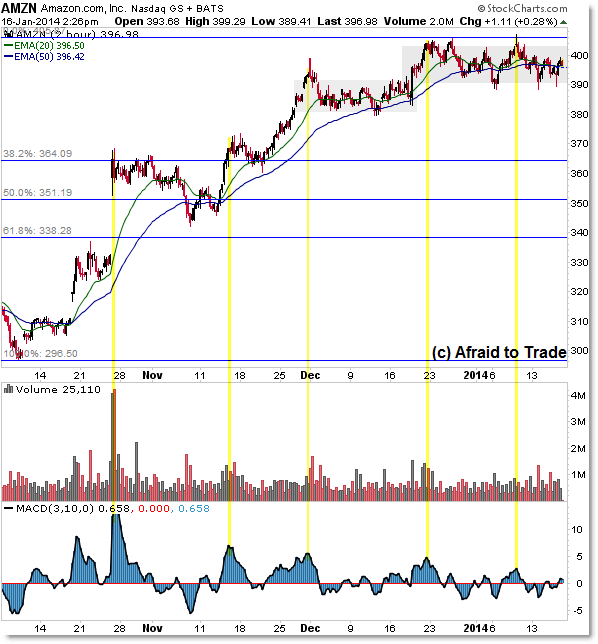Emini daytrading and intermarket divergence
Post on: 28 Июнь, 2015 No Comment

A benefit of trading mini stock index futures markets is the contribution of four popular and related markets that can be traded simultaneously. The S&P 500 (ES), Nasdaq-100 (NQ), Russell 2000 (TF) and Dow Jones Industrial Average (YM) can be traded using price level discrepancies that occur among the four markets. This is similar to how, for example, gold and silver, or oil and natural gas futures are swing traded in pairs. These price discrepancies are referred to as intermarket divergence, and they can create powerful trading setups for E-mini day-traders.
The four mini stock index futures markets can be put into leader-follower relationships based on the composition of their underlying stock indexes. One such pairing is:
Leader Follower
TF (Russell 2000) ES (S&P 500)
NQ (Nasdaq 100) YM (DJIA)
The assumptions behind this relationship are that the small-cap Russell 2000 moves more precipitously than the larger stocks in the S&P 500, and the Nasdaq 100 high-tech stocks will show similar behavior relative to the more
stalwart DJIA.
As an example of these relationships, if the TF is rallying but the ES remains in a tight trading range, then a long ES position may be warranted, based on an expectation that the ES follower market will catch up to the TF leader market. Conversely, if the NQ is selling, while the YM contract is seen to be lagging, then shorting the YM contract potentially can be a good trade.
When other trade parameters are in place, this type of trading can be profitable. In this article we take a look at day-trading mini stock index futures using intermarket divergence techniques.
FOUR-PLEX TRADING SCREEN
To take advantage of intermarket divergences quickly, the prepared day-trader maintains a single-screen view of all four markets. This is referred to as the mini Four-Plex screen. The Four-Plex screen arranges the TF, ES and NQ, YM charts in a leader-follower format and uses a fixed timeframe three-minute chart so that identical points in the trading day are compared.
The charts include individual price level lines using common reference price levels, such as previous days high and low, pivot, open, support 1 and 2 (S1, S2) and resistance 1 and 2 (R1, R2). A horizontal initial balance bar (yellow) also is drawn by software on the Four-Plex charts so that the trader can gauge the market relative to the first hours high-low price range.
From the Four-Plex screen shown (Jan. 28, 2009), we see a discrepancy between the YM (DJIA) contract and the other markets (see Down with the Dow, right). The YM is lagging the other three by a considerable amount. With the YM holding to its R2 level, the ES, TF and NQ markets are well above their R2 price levels. This is a good example of an intermarket divergence taking place.
Before becoming convinced that a long position in the YM contract makes for a high probability entry, the trader may seek additional support for entering the market. Intermarket divergence is most effective when combined with confirming views of the session.
Looking to market breadth (number of advancing stocks number of declining stocks) and a positive accumulation of exchange-wide ticks (see A Cumulative Solution to an Age-Old Problem, August 2009), the trader becomes convinced a strong trend-up day is unfolding. In which case, it is unlikely the YM (DJIA) contract will continue to lag the other indexes so dramatically, and the day-trader is ready to take a position.
Combining intermarket divergence, the trend-up day determination and a low-risk buying ledge that has developed in the YM contract and is just above a key 8000 price level, a YM long position makes for a high probability entry. The low-risk buying ledge means a stop-loss can be set just below the ledge and tilts the trade setup in the favor of a long entry. The entry is shown in the Jan. 28 Four-Plex chart using a blue arrow pointing up.
Becoming adept at this style of intermarket divergence day-trading requires the trader to survey the Four-Plex screen quickly to determine if a divergence is taking place. Software can be used to provide automated alerts as well.














